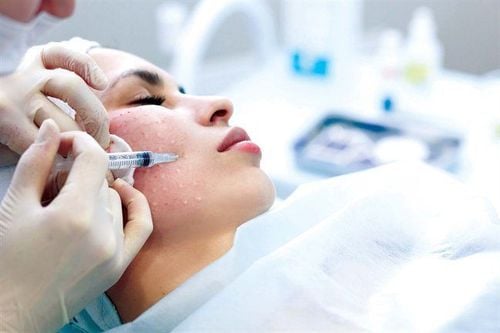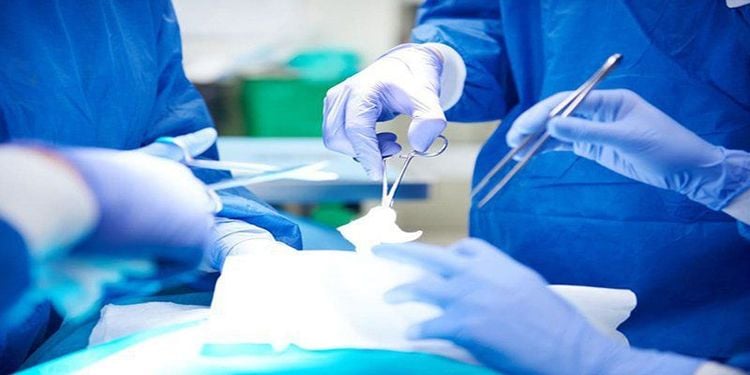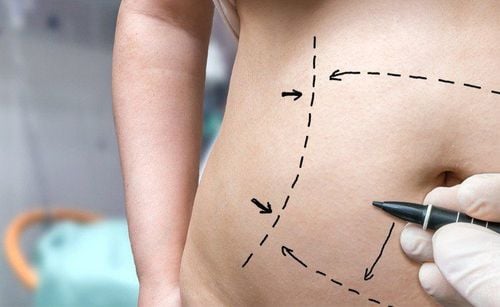This is an automatically translated article.
While liquid silicone injections can be performed anywhere on the face and body, removing liquid silicone from cosmetically important areas such as the nose, eyes, cheeks, and chin is becoming increasingly complex. complex. Even surgical removal of silicon is more difficult due to anatomical limitations as well as important vascular and nerve structures that can be damaged during manipulation.1. What is liquid silicone removal?
Liquid silicone is a permanent synthetic substance that is sometimes injected into the body as a dermal filler. The injection of liquid silicone into the face, lips, chest and buttocks to add volume, make the body fuller and more attractive.Over time, cosmetic procedures with liquid silicone injections often lead to serious complications. At this point, the only way to solve or avoid these problems is to have the liquid silicone removed surgically quickly. The process is literally “ablation” in nature, which is the cutting of the silicone component itself along with scar tissue, hard nodules, and tumors known as granulomas that may develop around the artificial material. .

Tiêm silicon lỏng vào mặt, môi, ngực và mông nhằm tạo vẻ căng tràn sức sống
2. Benefits and risks of liquid silicone removal
2.1 Benefits Liquid silicone removal intervention is the only way to reduce and stop the harmful and unpleasant side effects associated with this cosmetic procedure, including pain, itching, redness, stiffness, inflammation and even cancer. On the other hand, if the silicone migrates to other areas of the body, the material can also cause embolism, stroke, and infection.Therefore, surgical removal of liquid silicone can prevent these life-threatening conditions. Moreover, at the surgical site, the plastic surgeon can reconstruct the body contours by transferring fat, so it will look more natural.
2.2 Risk The recovery time after liquid silicone removal can be lengthy. Depending on the area of the body, the person may need to rest for two weeks and possibly longer until the wound heals to return to normal activities.
Sometimes the patient may also feel discomfort, the stitched wound will be painful, bruised and swollen. In some cases, compression clothing must be worn to reduce swelling and retain water. Accordingly, on high-risk areas, before the end of surgery, the doctor will place a drainage tube to remove secretions, pus, and serum from the surgical area until it is completely dry.
In addition, liquid silicone removal surgery is not without its own risks, but includes fat embolism (when fat becomes trapped in a blood vessel and stops blood flow), numbness, and fat necrosis. However, all of these risks are inherent from the silicone ingredient itself. Therefore, patients should consult with an experienced surgeon about whether it is safer to remove liquid silicone than to live with it.
Furthermore, removing liquid silicone can cause skin dents, scars, and other abnormalities. Therefore, patients may also need reconstructive plastic surgery (usually fat transfer) to correct them. Finally, sometimes the surgeon cannot remove all of the injected silicone. Although previous symptoms may improve, there is still a risk of long-term problems that need to be addressed with other surgeries in the future.

Thời gian để hồi phục sau khi lấy bỏ silicon lỏng có thể kéo dài
Accordingly, some surgeons recommend liposuction to remove large liquid silicone buildup. However, others warn that the liquid silicone component has spread so surgical removal may be more effective.
However, regardless of the method chosen, surgeons need to take magnetic resonance imaging before surgery to determine exactly where the silicone is concentrated in specific areas in the face and neck area. At the same time, imaging facilities will also help to assess whether there is migration to other areas. From there, the doctor can determine the location of the skin incision with the appropriate incision as well as limit the scope of the surgical field to be investigated.
Similar to other surgeries, patients are prepared for surgery, including cleaning the body and stopping eating from the night before surgery. Removal of liquid silicone still requires general anesthesia or local anesthesia with sedation. After that, the patient is prepared in a suitable position, exposing the head, face and neck area to start the intervention.
Based on the images of the preoperative survey tools, the doctor will expose the surgical area, dissect the liquid silicone mass and related tissues. After assessing that the complete liquid silicone has been removed, depending on the condition of the wound, the doctor will consider the need for placement and storage of a drain before closing the incision. The patient will continue to be monitored in the recovery area until fully recovered. The hospital stay can be 3 to 5 days or until the drain can be removed. Before being discharged from the hospital, the patient will be instructed on wound care and scheduled for re-evaluation.
Once healed after liquid silicone removal surgery, the patient may be considered for body contouring and restoration of lost tissue volume through autologous fat grafting procedures. These surgeries will collect excess fat from other body areas and inject into the defect area after removing liquid silicone, increasing tissue volume and ensuring patient aesthetics.
In summary, removing liquid silicon , in some cases, may face risks that outweigh the benefits. However, if the liquid silicone injection site is no longer tolerable, this surgery should be performed early. Because the face and neck area is home to a complex anatomical structure, with many vascular bundles, the removal of liquid silicone requires an experienced, cautious and skilled doctor to ensure aesthetics as well as avoid unnecessary complications. require further intervention.
Please dial HOTLINE for more information or register for an appointment HERE. Download MyVinmec app to make appointments faster and to manage your bookings easily.













